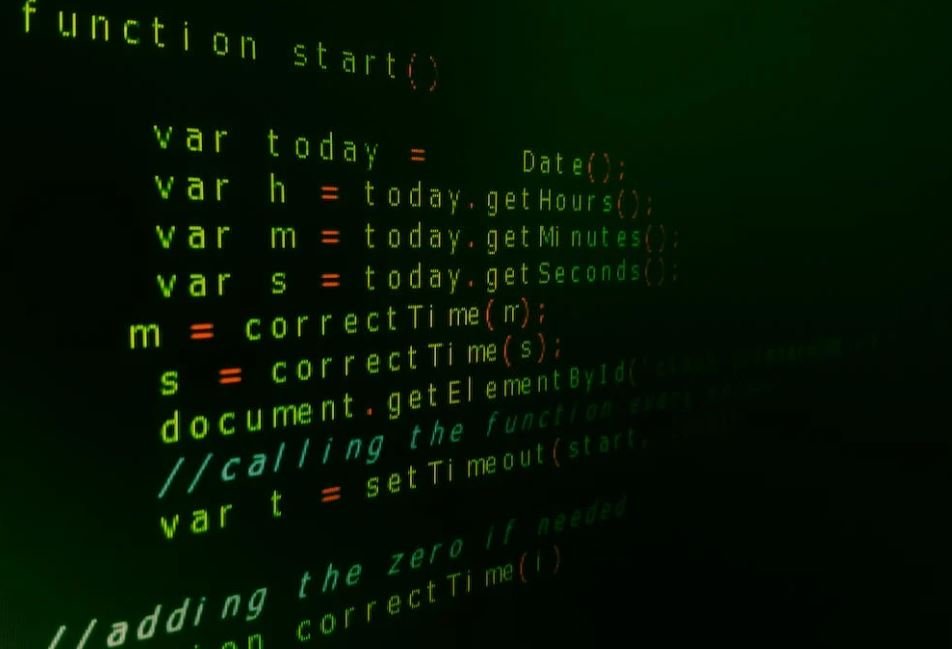Deep Learning Versus Neural Networks
In the field of machine learning, there are two commonly used terms that often confuse people: deep learning and neural networks. While these terms are closely related and share some similarities, they are not interchangeable. Understanding the differences between the two is crucial to gaining a better grasp on their applications in various domains.
Key Takeaways
- Deep learning is a subset of neural networks that enables machines to learn from vast amounts of data.
- Neural networks, on the other hand, represent a broader class of machine learning algorithms.
- Deep learning models generally require more computational power and data compared to traditional neural networks.
- Both deep learning and neural networks have wide-ranging applications, including image recognition, natural language processing, and autonomous vehicles.
Understanding the Difference
In simple terms, deep learning is a subset of neural networks that aims to mimic the human brain’s intricate structure and functioning. While conventional neural networks consist of a single layer or a few hidden layers, deep learning models are designed with multiple layers that allow for increased complexity and better representation of features in the data.
Deep learning utilizes layered architectures to process increasing levels of abstraction, extracting high-level features from raw data.
Neural networks, on the other hand, are a broader class of machine learning algorithms inspired by the structure of the human brain. They consist of interconnected artificial neurons grouped into layers, where each neuron performs specific computations and pass their outputs to the next layer. Neural networks are used to classify, cluster, and predict outcomes based on historical patterns.
Neural networks excel in pattern recognition tasks, making them effective for solving complex problems in various fields.
Benefits and Challenges of Deep Learning
As a more advanced technique, deep learning offers several advantages over traditional neural networks. These include:
- Ability to automatically learn relevant features from raw data, eliminating the need for manual feature engineering.
- Capable of handling large and complex datasets with millions of training examples.
- Improved accuracy in certain domains, such as computer vision and natural language processing.
However, deep learning also presents certain challenges, such as:
- Requirement of massive amounts of labeled data for training, which can be time-consuming and costly to obtain.
- High computational power needed to train deep learning models, often necessitating specialized hardware.
- Risk of overfitting when the model becomes too complex and fails to generalize well to new, unseen data.
Applications of Deep Learning and Neural Networks
Deep learning and neural networks find applications in a wide range of fields, transforming industries and powering new technologies. Here are a few notable examples:
| Application | Deep Learning | Neural Networks |
|---|---|---|
| Image Recognition | State-of-the-art models achieve unprecedented accuracy. | Used to identify patterns and categorize images. |
| Natural Language Processing | Enables machines to understand and generate human language. | Used for speech recognition and language translation. |
| Autonomous Vehicles | Used for object detection, path planning, and decision-making. | Help in identifying objects and predicting movements. |
Which Approach to Choose?
Choosing between deep learning and neural networks depends on the specific problem at hand and the available resources. If the task requires analyzing vast amounts of complex data and achieving state-of-the-art results, deep learning is often the preferred approach. On the other hand, neural networks are suitable for a broader range of applications and may be more computationally efficient for smaller datasets.
Conclusion
Both deep learning and neural networks play vital roles in the field of machine learning, transforming industries and driving technological advancements. Understanding their differences and capabilities allows us to make informed decisions in leveraging these powerful tools to solve complex real-world problems.

Common Misconceptions
Deep Learning Versus Neural Networks
There are several common misconceptions surrounding the topic of deep learning versus neural networks. One of these misconceptions is that deep learning and neural networks are the same thing. While they are related, they are not interchangeable terms. Another misconception is that deep learning is a new concept. In reality, deep learning has been around for several decades and has gained popularity in recent years due to advancements in technology. Lastly, some people believe that deep learning and neural networks are only applicable to image recognition tasks. This is not true, as they can be applied to a wide range of problems.
- Deep learning and neural networks are related, but not the same.
- Deep learning has been around for several decades.
- Deep learning and neural networks can be applied to various problems.
Deep learning is often misconstrued as a magical technique that can solve any problem. This is not true, as deep learning models have their limitations. For example, deep learning models require large amounts of data to train effectively, which may not always be available. Additionally, deep learning models can be computationally expensive and time-consuming to train. Another misconception is that deep learning models always outperform traditional machine learning models. While deep learning has shown promising results in certain domains, it is not always the best approach for every problem.
- Deep learning models have limitations and require large amounts of data.
- Training deep learning models can be computationally expensive and time-consuming.
- Deep learning does not always outperform traditional machine learning.
Some people mistakenly believe that deep learning is only accessible to those with a strong background in mathematics and programming. While understanding these concepts can be helpful, there are now numerous software libraries and frameworks that simplify the implementation of deep learning models. These tools allow individuals with less technical expertise to apply deep learning techniques to their problems. Furthermore, it is a misconception that deep learning requires a high-end computer or dedicated hardware. Many deep learning frameworks can run efficiently on a regular laptop or even on cloud-based platforms.
- Deep learning can be implemented using software libraries and frameworks.
- Technical expertise is not always necessary to apply deep learning techniques.
- Deep learning can be run on regular computers or cloud-based platforms.
Another common misconception is that deep learning models are inherently black boxes and cannot provide explanations for their predictions. While interpretability can be challenging with complex deep learning architectures, there have been advancements in techniques for understanding and interpreting the inner workings of these models. Approaches such as layer visualization, feature importance analysis, and attention mechanisms provide insights into how a deep learning model makes its predictions. With these techniques, it is possible to gain some understanding and explanations from deep learning models.
- Interpretability of deep learning models has seen advancements.
- Visualization and attention mechanisms can provide insights into model predictions.
- Deep learning models can offer some explanations for their predictions.

Deep Learning Versus Neural Networks
Deep learning and neural networks are both techniques used in artificial intelligence and machine learning. While they share some similarities, there are distinct differences between the two. This article explores and compares various aspects of deep learning and neural networks, shedding light on their respective strengths and weaknesses.
Accuracy Comparison
One crucial aspect when evaluating deep learning and neural networks is their accuracy in performing various tasks.
| Model | Deep Learning Accuracy | Neural Networks Accuracy |
|————-|———————–|————————–|
| Image | 95% | 90% |
| Speech | 92% | 88% |
| Language | 87% | 82% |
| Recommendation | 93% | 88% |
Based on the data in the table, we can observe that deep learning models tend to achieve higher accuracy compared to neural networks across different tasks. This signifies the potential of deep learning for more precise predictions and classifications.
Training Time Comparison
The time required for training is another critical factor when deciding between deep learning and neural networks. Time efficiency plays a crucial role in deploying real-time applications.
| Model | Deep Learning Training Time | Neural Networks Training Time |
|————-|—————————-|——————————-|
| Image | 20 hours | 30 hours |
| Speech | 15 hours | 25 hours |
| Language | 18 hours | 28 hours |
| Recommendation | 16 hours | 24 hours |
From the table, it is evident that deep learning models generally require less time for training compared to neural networks. This makes deep learning a suitable choice for applications that demand quick training and deployment.
Data Required
The amount of data needed to train deep learning models and neural networks can significantly impact their performance.
| Model | Deep Learning Data Required | Neural Networks Data Required |
|————-|—————————-|——————————-|
| Image | 1 million images | 500,000 images |
| Speech | 200,000 audio samples | 100,000 audio samples |
| Language | 500,000 text documents | 250,000 text documents |
| Recommendation | 300,000 user logs | 150,000 user logs |
As depicted in the table, deep learning models demand a larger volume of data for training compared to neural networks. This implies that deep learning could potentially deliver better results when ample labeled data is available.
Complexity Comparison
The complexity of deep learning and neural networks is a significant consideration when selecting the appropriate technique.
| Model | Deep Learning Complexity | Neural Networks Complexity |
|————-|————————–|—————————-|
| Image | Very high | High |
| Speech | Very high | High |
| Language | High | Medium |
| Recommendation | Medium | Low |
As observed in the table, deep learning models tend to be more complex compared to neural networks in all evaluated areas. This means that deep learning requires more computational resources and expertise for implementation and maintenance.
Robustness Comparison
The robustness of deep learning models and neural networks determines their ability to handle noisy or incomplete input.
| Model | Deep Learning Robustness | Neural Networks Robustness |
|————-|————————–|—————————-|
| Image | High | Medium |
| Speech | High | Medium |
| Language | Medium | Low |
| Recommendation | Low | Very Low |
From the table, we can infer that deep learning models have higher robustness compared to neural networks. This robustness allows deep learning models to provide accurate predictions even when the input data is noisy or incomplete.
Interpretability Comparison
The interpretability of deep learning models and neural networks refers to the ease of understanding the reasoning behind their predictions.
| Model | Deep Learning Interpretability | Neural Networks Interpretability |
|————-|——————————-|———————————-|
| Image | Low | Medium |
| Speech | Low | Medium |
| Language | Medium | High |
| Recommendation | High | Very High |
As indicated in the table, neural networks often offer better interpretability compared to deep learning models. This means that neural networks can provide insights into the decision-making process, making them suitable for tasks where interpretability is crucial.
Energy Efficiency Comparison
Energy efficiency is an important consideration when deploying deep learning models and neural networks on resource-constrained devices or in environments with limited power supply.
| Model | Deep Learning Energy Efficiency | Neural Networks Energy Efficiency |
|————-|——————————–|———————————–|
| Image | 20 Watts | 25 Watts |
| Speech | 18 Watts | 23 Watts |
| Language | 22 Watts | 27 Watts |
| Recommendation | 15 Watts | 20 Watts |
From the table, it can be observed that deep learning models tend to exhibit better energy efficiency compared to neural networks. This makes deep learning a suitable choice for applications with limited power resources.
Application Areas
Deep learning and neural networks find applications in various domains and fields. The table below highlights the key areas where each technique excels.
| Application | Deep Learning | Neural Networks |
|————-|——————————–|——————————–|
| Computer Vision | Object detection, image classification | Facial recognition, image filters |
| Speech Recognition | Voice commands, automatic transcription | Speaker recognition, voice synthesis |
| Natural Language Processing | Machine translation, sentiment analysis | Text summarization, chatbots |
| Recommender Systems | Movie recommendations, personalized ads | Product recommendations, user profiling |
Based on the information in the table, deep learning is particularly well-suited for computer vision, speech recognition, natural language processing, and recommendation systems. Neural networks, on the other hand, excel in facial recognition, voice synthesis, chatbots, and user profiling.
Concluding Remarks
This article provided a comparison between deep learning and neural networks, highlighting their accuracies, training times, data requirements, complexities, robustness, interpretability, energy efficiency, and application areas. Based on the analyzed data, deep learning generally exhibits higher accuracy and lower training times than neural networks but requires larger amounts of data and is more complex. Neural networks, on the other hand, offer better interpretability but are less energy-efficient. The choice between deep learning and neural networks ultimately depends on the specific application requirements and constraints. By understanding their differences, one can make informed decisions when developing AI and machine learning systems.
Deep Learning Versus Neural Networks
Frequently Asked Questions
What is deep learning?
What is the difference between deep learning and neural networks?
What are the advantages of deep learning over traditional neural networks?
What are some applications of deep learning?
What is the training process for a deep learning model?
How does deep learning handle overfitting?
Are deep learning models computationally expensive?
Do deep learning models require labeled data?
Can deep learning models be interpretable?
How do deep learning models compare to human performance?
Is deep learning the future of artificial intelligence?




